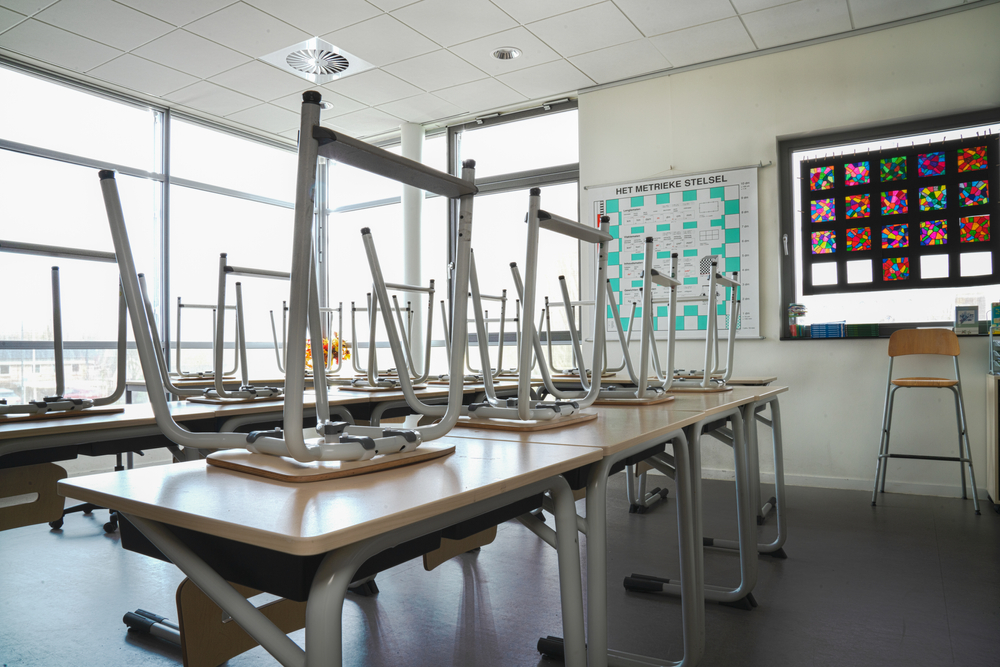There are three ways to look back at the first year of the COVID pandemic. The first is to learn from the whole experience. Recall the fear, pain, and misery brought on by lockdowns, mask mandates, and social distancing, as well as the deaths that could have been prevented but weren’t because of politics (think the nursing home debacles). Remember the names of the experts, organizations, and politicians who exploited the crisis, demonized dissent, and ruined lives, repeatedly defying common sense. And then come up with ways to deal with future crises that minimize disruption, uphold fundamental rights, and most importantly, save lives.
The second way to look at the pandemic is not to look back at all but just to move on. Take all the suffering, stupidity, and duplicity and flush it all out. Recognize that it was a weird time when nothing made sense and everyone dropped the ball. Look forward to a time when lockdowns, face masks, social distancing, and vaccine mandates are as unknown as they were before COVID. Hope and pray that the world will sort itself out and ignore all the doomsayers who want to bring back pandemic hysteria.
The third way, however, is to remember the COVID years and lament the losses but learn absolutely nothing from them. To see all of it as some unavoidable tragedy that visited the nation and revealed how fragile human beings really are. Take some solace in the fact that it drove President Trump out of office, put the “adults” back in charge, and opened up possibilities for expanding the power of government and state-driven programs for the sake of public health. And adamantly refuse to question the false narratives that deluded so many Americans for so long, and continue to delude so many of them today.
At first, NPR education correspondent Anya Kamenetz’s new book, The Stolen Year: How COVID Changed Children’s Lives, and Where We Go Now, seems to be taking the first approach, focusing on the harms children suffered during the pandemic. However, it soon becomes apparent that the third approach is where she is most comfortable: whining and ranting about the “stolen year” without really assessing its causes or developing practical solutions. As she states in her introduction: “This book is a testimony of fierce love. … Individuals did as much as they could. But it wasn’t enough.” This is meant to pull at the heart strings and inspire the reader, but even a cursory remembrance of COVID reveals the opposite: There was rather a large number of gullible adults entrusting their children to the whims of corrupt experts and politicians.
But Kamenetz needs to have her heroes, who will be the strong independent mothers (including her) who suffered during the pandemic and, to a relatively small extent, their children. She also needs to have her villains, starting with President Trump (she obnoxiously begins each of her chapters with a quote from him, followed by the COVID death count at the time) along with the former secretary of education Betsy DeVos, school-choice proponents, people who opposed the COVID vaccine, nearly all conservatives, and of course systemic racism.
For anyone not in the choir to whom Kamenetz preaches, her account of this time in our history and its impact on children is a frustrating slog, though it’s quite revealing as to how the left chooses to remember COVID. Despite relentlessly pushing the madness for two years straight, none of them will take responsibility for any of it.
Organizing her book chronologically, Kamenetz begins in the spring of 2020, the first sign of the pandemic, at least in the U.S. Ostensibly, this would mean discussing the shocking course of locking down schools. However, instead of exploring how this happened and what immediate effect it had on students and teachers, Kamenetz uses COVID mainly as an occasion to defend public education. To those who contend that public schools are ineffective and expensive, she argues that the schools’ “job has gotten more complex and expensive as they’ve been required to provide more equitable services to a more diverse population with more varied and significant needs.” While true, this raises the inevitable questions, Why have schools evolved this way? And is that good or bad? She merely assumes it’s good and dismisses the criticisms that suggest otherwise.
To her credit, she does question whether it was good to shut down schools. She’s willing to say that it was a mistake and even admits that “the decision on opening schools was determined by political affiliation more than the local course of the disease.” Nevertheless, after writing this she conveniently refrains from admitting that it was largely her own political party that kept schools closed for so long.
After weighing in on public education, Kamenetz returns to discussing COVID’s impact on food distribution. However, this is merely a jumping off point for exploring the expansion of the American welfare system. She explains how school lunches were a part of LBJ’s War on Poverty in the 1960s and enjoyed wide popularity, but were opposed by various conservatives and J. Edgar Hoover. COVID didn’t exactly shut down this effort to distribute meals—no one starved—but it apparently put a strain on it.
She then transitions to the topic of childcare. Along with schools, nearly all day cares were closed as well. This put a heavy burden on parents of young children, causing many of them to quit their jobs if they weren’t allowed to work from home.
For Kamenetz, the solution to this is clear: universal day care. Even though this wouldn’t have kept day cares open during COVID, it would at least have guaranteed childcare to all parents. After taking the reader through a short history of childcare in America, she asks, “Did the pandemic cause a large enough upheaval in the social order to change how we collectively think about care?” In other words, will Americans think of childcare as a government endeavor rather than a private one? Clearly, she believes the former. True to form, she doesn’t want to let a crisis go to waste, so she presents a solution that wouldn’t work for a problem that’s not relevant.
This conversation segues to how children with special needs were deprived of key services, which launches yet another uninteresting history of a government program. She takes issue with the fact that parents must advocate for their children to receive individualized plans and services, though she hardly bothers with the great cost and bureaucracy required to provide these services nor how effective they are.
Kamenetz’s narrative picks up a little steam when she moves into the summer of 2020 and recounts the BLM and Antifa riots that followed the death of George Floyd. All of it is still very much one-sided, unconvincing, and unrelated to COVID, but it’s at least a change of pace. Like many on the left, she completely ignores the extensive damage of the so-called peaceful protests or that their gatherings directly violated COVID social distancing mandates.
Rather, she resorts to empty pandering: “If you’re a white reader of this book, let me say something to you, white person to white person: If you aspire to stand with all the mamas George Floyd summoned, it means reckoning in detail with how white supremacy is visited specifically on children.” In typical fashion, Kamenetz supports her argument by examining disparate outcomes between racial groups and concludes that racism must be the cause, never considering that this is a logical fallacy that confuses correlation with causation.
The next peak in her narrative comes soon after as Kamenetz considers the mothers affected by the COVID response. True to form, she asserts that equal rights for women is still a far-off goal, the government is doing too little, and the patriarchy looms large. She quotes approvingly the feminist sociologist Jess Calarco: “There are deep patriarchal norms that exist in society and they tell women, oftentimes for the economic benefit and power of men, that they should be the ones who are devoting their whole to their children and to family.”
It’s clear that Kamenetz wants to use COVID to reignite the feminist movement for the 21st century. Instead of examining differences in income or different treatment under the law, this newest iteration considers the burdens of “emotional labor,” the failure of men to adequately contribute to childcare, and social welfare programs that could assist mothers. It’s telling that all the testimony she uses are exclusively from women; a man might offer a different, more challenging perspective.
The book starts winding down as Kamenetz enters the fall of 2020, when schools either stayed closed, offering only virtual instruction, or reopened with both in-person and online instruction. Even though remote learning proved to be a disaster and teachers unions were a big reason for keeping the schools closed, Kamenetz can’t bring herself to criticize or blame them: “Looking at all the factors that undermined the school reopening process in the United States, I don’t see unions as the puppet master.” This is pure deflection. Schools in red states reopened safely while those in blue states remained closed because teachers unions demanded it.
Since most students settled for virtual instruction for much of the 2020–21 school year, many of them ended up spending most of their days staring at screens and avoiding human contact. This unhealthy arrangement subsequently precipitated a mental health crisis among young people. To illustrate this, Kamenetz recounts a few examples of kids who went through deep depression during the lockdowns. Once again, so much of this could have been avoided by lifting the lockdowns, but also once again, Kamenetz instead pushes for more public funding for mental health services for children.
This brings her to the end of the stolen year, winter of 2020–21, in which she describes the January 6 protest in Washington D.C., the first COVID vaccines, and the contested presidential election. Beyond recounting recent history, she has surprisingly little to say about this, except to point out how polarized American society has become and how bad the MAGA crowd was.
Although there’s some closure in the final chapter as Kamenetz revisits some of the families she uses as case studies throughout the book, there is hardly any satisfying resolution. She supposes that COVID happened and will continue happening, despite the vaccine and vaccine mandates. And though government institutions failed the children and the American people at large during this crisis, that only means they need more money and support so that maybe they can do better next time.
Overall, The Stolen Year is a good example of how political and cultural bias, the pushing of an ideologically driven narrative, makes an objective analysis of a worldwide crisis like COVID impossible. For all the research she does into various government programs, all the interviews she conducts with families across the country, and all the professional experience she brings to her topic, Kamenetz contributes nothing new or constructive to the conversation beyond the usual leftist talking points. She casts most Americans as victims with little agency, clamors for more government largesse, and whines about conservatives.
It’s evident that her heart bleeds for the families harmed by COVID, but she carefully avoids examining the real causes of that harm. Instead, she just uses the virus as an opportunity to advance her agenda, oblivious to the fact this agenda is unworkable and not what most Americans want anyway.
Rather, what is desired is a reckoning for those who exploited COVID, justice for those who needlessly suffered (particularly young people), and a general return to normalcy. Kamenetz could have promoted some of this with The Stolen Year but squandered the opportunity. Partisan politics ultimately got the better of her and turned her book into a progressive sermon even her choir may have grown tired of hearing.

